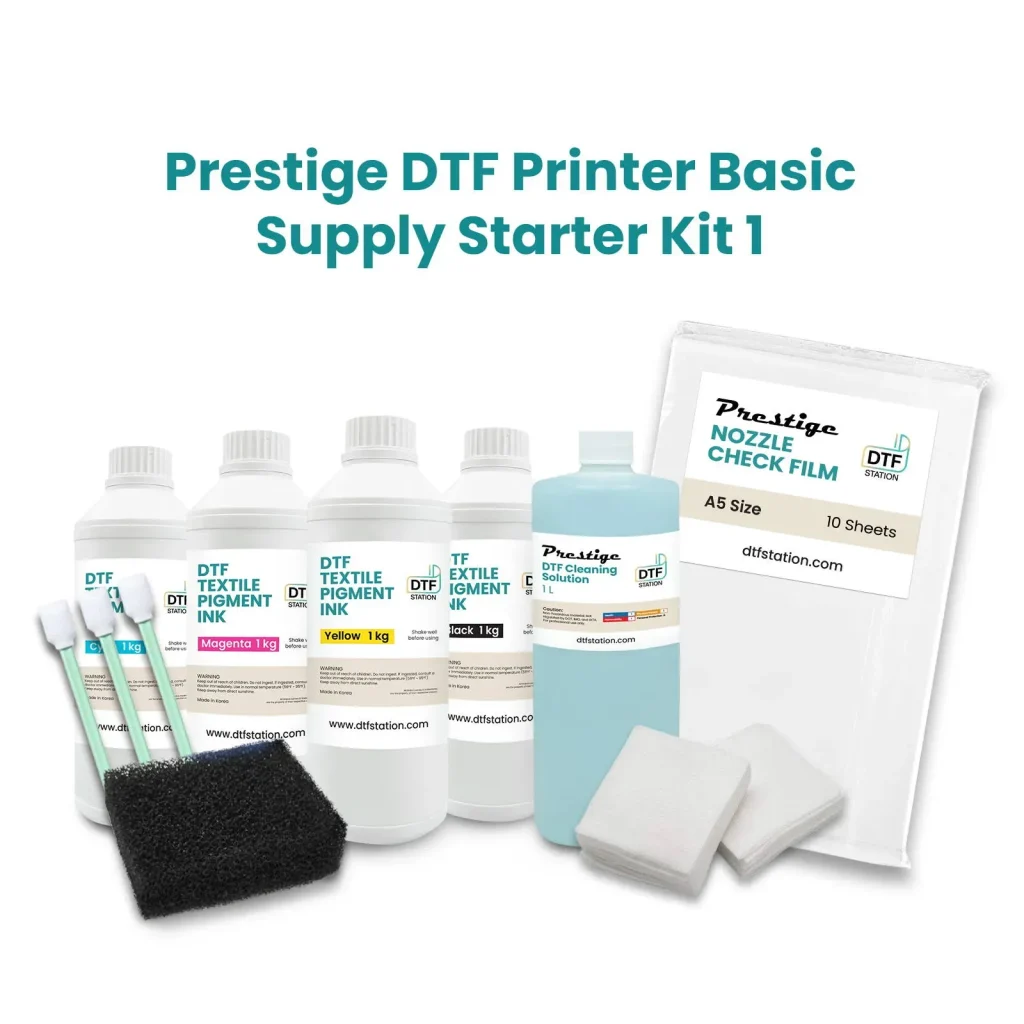DTF Supplies play a crucial role in the burgeoning world of Direct-to-Film (DTF) printing, a method that has revolutionized the textile industry by offering vibrant color capabilities and the ability to print intricate designs seamlessly. For anyone looking to embark on a DTF printing venture, understanding the essential tools and materials is key. This guide will illuminate the specifics of DTF equipment, such as DTF printers and heat presses, while also highlighting the importance of DTF film and adhesives in achieving high-quality results. As one of the most versatile printing methods available, DTF printing opens up numerous opportunities for businesses of all sizes to create custom apparel with exceptional durability and visual appeal. By mastering the basics of DTF Supplies, beginners can effectively manage their projects and excel in a competitive market.
Delving into the realm of Direct-to-Film printing provides a unique window into an innovative approach to garment decoration. With its reliance on specialized films and adhesives, this printing technique stands out as a favorite among apparel entrepreneurs. The use of advanced technologies and equipment in this fast-evolving field ensures that even small-scale operations can deliver professional-grade results. From selecting appropriate materials to mastering the heat transfer process, every aspect of this craft is intertwined with a focus on quality and artistry. For those ready to explore this exciting medium, becoming familiar with DTF supplies and their applications is the first step towards success.
Understanding DTF Printing Basics
DTF printing stands for Direct-to-Film printing, a modern and innovative method for transferring images onto fabric. This process involves printing a design onto a specialized PET film using DTF printers equipped with water-based inks. What sets DTF printing apart is its ability to produce vivid, multi-color designs with intricate details, suitable for various fabric types. As this print technology becomes more mainstream in the textile and apparel industry, it’s essential for potential users to understand its core principles and applications.
The process of DTF printing offers several advantages, including flexibility in production and cost-effectiveness for low-volume orders. It provides the opportunity to experiment with different graphic elements without the high setup costs associated with traditional screen printing. DTF is rapidly gaining recognition among small business owners and indie designers who want to deliver top-notch custom apparel with unique designs.
Essential DTF Supplies and Equipment
To embark on your journey in DTF printing, investing in the right supplies and equipment is crucial. Key items include a specialized DTF printer tailored for direct-to-film applications, a quality DTF film that optimally holds ink, and an effective adhesive powder that ensures prints adhere well to fabric. The right heat press is also indispensable, as it provides the necessary heat and pressure to successfully transfer the design from the film to the fabric surface.
Choosing high-quality DTF supplies not only ensures a smoother printing process but also enhances the overall durability of the prints. It is important to research and purchase components that have proven reliability in the market to avoid issues such as print peeling or poor color retention after multiple washes. Understanding these essentials is the first step towards bringing your DTF printing projects to life.
Step-by-Step Process of DTF Printing
The DTF printing process is methodical and requires attention to detail to achieve quality results. Initially, designers begin by creating artwork using graphic design software, ensuring that the design is optimized for the DTF printing format. Once the design is finalized, the next step is using the DTF printer to print directly onto the PET film. This step is critical as the print quality directly affects the final product.
Following the printing stage, it’s essential to apply adhesive powder evenly over the wet ink. This adhesive will bond the design to the fabric in subsequent heating phases. Adequately heating the adhesive as per the required temperature and duration is vital to ensure that the design adheres prominently on the fabric, ultimately culminating in the heat transfer phase, where care must be taken to align the film correctly with the fabric.
Advantages of DTF Printing
One of the most notable benefits of DTF printing is its versatility. This printing method allows for the application on various fabric materials ranging from cotton to polyester blends. Its flexibility means businesses can cater to different customer preferences and market demands, making it an appealing choice for custom apparel production.
Additionally, DTF printing is particularly cost-effective for small batch orders, making it a desirable option for new startups and small businesses. Compared to traditional printing methods, it involves lower upfront costs, reducing financial risk while delivering high-quality prints. This makes it an attractive printing solution for entrepreneurs looking to enter the competitive world of custom printing.
Challenges Faced by DTF Printing Beginners
Despite its advantages, beginners in DTF printing may encounter various challenges as they navigate the learning curve. One significant issue is printer maintenance; ensuring your DTF printer remains in optimal condition is crucial for consistent print quality. Regular cleaning and checks can help avoid complications such as clogged nozzles or ink distribution issues.
Another common challenge is the precise alignment of DTF film during the printing and transferring stages. A misaligned film can lead to incomplete transfers or distorted images. Therefore, beginners should take the time to practice proper alignment techniques and seek guidance through demonstrations or tutorials to develop their skills effectively.
Recent Developments in DTF Technology
As the DTF printing industry evolves, advancements in technology are continually reshaping the landscape. Newer DTF printers are being designed to deliver even greater efficiency and superior print quality. Innovations in ink formulation are also emerging, resulting in enhancements such as improved drying times and stronger adhesion properties.
Staying updated with these advancements is crucial for business owners as investing in the latest equipment and techniques can significantly impact production quality and output. By understanding the latest trends in DTF technology, businesses can position themselves competitively in a rapidly evolving marketplace.
Frequently Asked Questions
What supplies are essential for DTF printing?
To get started with DTF printing, essential supplies include a DTF printer, DTF film, adhesive powder, and a heat press. The DTF printer uses specialized, water-based inks designed for the PET film, while DTF film holds the design during transfer. The adhesive powder is crucial for binding the print to fabric, making the heat press a vital tool for successful transfers.
How does DTF printing work?
DTF printing works by printing designs onto PET film using a DTF printer, which applies water-based inks. After the design is printed, adhesive powder is sprinkled onto the wet ink. This film is then heat-pressed onto the desired fabric, allowing the adhesive to bond the print securely. This method produces vibrant, durable designs on various fabrics.
What is DTF adhesive, and why is it important?
DTF adhesive is a specialized powder that allows printed designs on DTF film to adhere to fabric. It is important because it ensures the longevity and durability of the print. Proper application and curing of the adhesive are critical to avoid peeling or fading after washing and to maintain the quality of the design over time.
Can DTF printing be used on different types of fabrics?
Yes, DTF printing is versatile and can be used on various fabric types, including cotton, polyester, and blends. This flexibility allows businesses to create custom apparel suitable for different applications, from promotional items to fashion wear, making DTF an attractive option for many users in the textile industry.
What advantages does DTF printing offer over other printing methods?
DTF printing offers several advantages, including versatility in fabric compatibility, lower startup costs for small orders, and durability of prints that withstand regular washing. These benefits make DTF printing especially appealing for startups and independent operators in the custom apparel market.
What challenges might beginners face when using DTF supplies?
Beginners may encounter challenges such as maintaining the DTF printer, which is necessary for optimal print quality, and ensuring precise alignment of the DTF film during the printing and heat transfer process. To overcome these challenges, following guidelines, practicing techniques, and maintaining equipment can help achieve better results.
| Key Aspect | Details |
|---|---|
| What is DTF Printing? | A method of printing on PET film, transferred to fabric with heat, producing vibrant colors and designs. |
| Essential Supplies | DTF Printer, DTF Film, Adhesive Powder, Heat Press. |
| Step-by-Step Process | 1. Design Creation 2. Printing 3. Applying Adhesive 4. Heating the Adhesive 5. Heat Transfer to Fabric. |
| Advantages | Versatile on different fabrics, cost-effective for small orders, durable prints. |
| Challenges for Beginners | Printer maintenance, precise film alignment, need for experimentation and adherence to guidelines. |
| Recent Developments | Advancements in printer technology and ink formulations enhancing print quality and efficiency. |
Summary
DTF Supplies are essential for anyone venturing into the custom apparel business. Understanding the fundamentals of Direct-to-Film printing opens doors to a world of creative possibilities, allowing for the production of vibrant and intricate designs on various fabrics. As a beginner, grasping the necessary equipment, the step-by-step processes, and the potential advantages of DTF printing can significantly enhance your projects. With the right supplies and attention to detail, you can overcome initial challenges, creating durable prints that appeal to customers and set your offerings apart in a competitive market.

